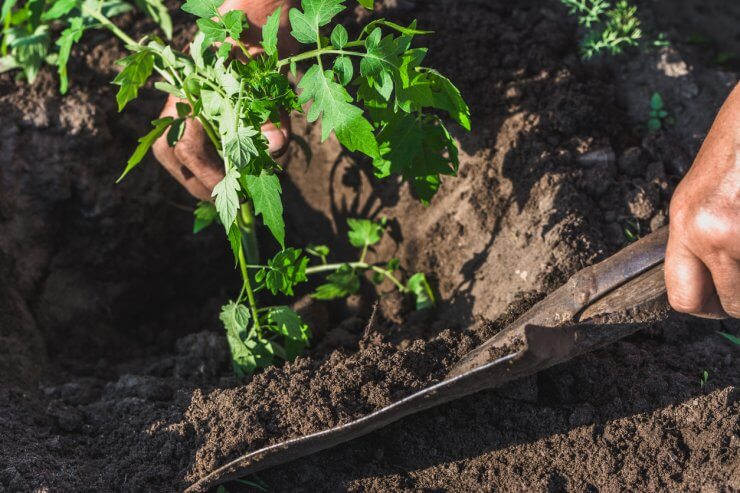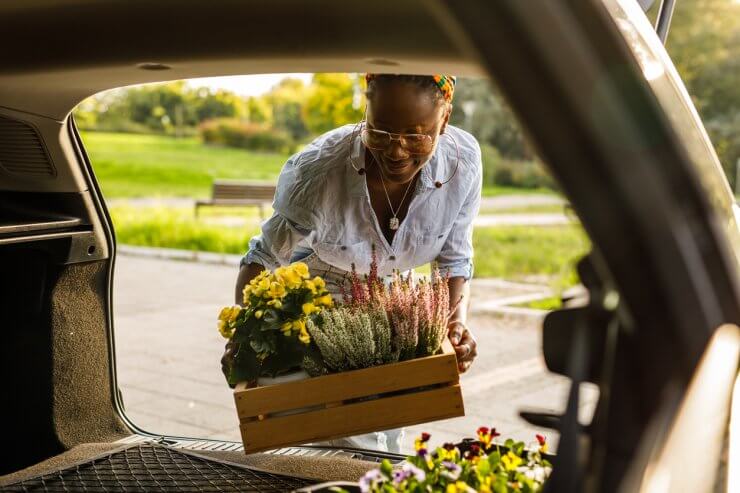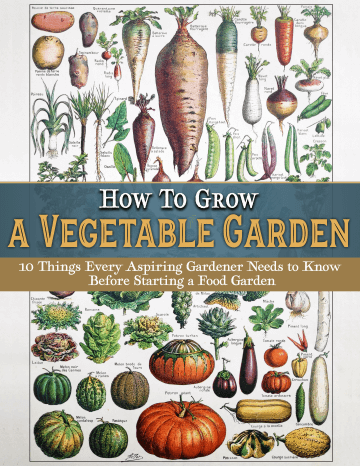
You’re moving! That new home is just what you wanted. It’s the perfect size, there’s an extra half bath, and the kitchen is a dream! And … you’re leaving behind your lovingly tended garden. Fear not! Let’s look at how to move a garden!
First, though, let’s clear the air. I know what you’re thinking. Don’t the people moving into your old home deserve a garden? Isn’t that one of the reasons they liked the place? Is it really fair to take the garden with you?
Yes, everyone deserves a garden, and that probably is one of the reasons they liked your place so much. But do they deserve the asparagus you’ve cultivated for seven years? Should they get your delicious blueberry bushes? And do you really want to leave your heirloom tomatoes a few weeks before they’re ready to harvest?
Look, I’m not saying you should dig up the entire garden and leave the new occupants with a big hole in the ground. And I’m sorry to be the bearer of bad news, but you’ll probably need to leave that 10-year-old apple tree. (You could arguably move it, but that would take a lot of work, and it might really annoy the next occupants–and could even lead to legal hassles, depending on your lease or sales agreement. Talk to your realtor about this, but generally speaking, trees and perennial bushes are part of the property.)
All that said, you can learn how to move a garden, and you can be pretty successful at it.
Discover 10 top tips for growing, harvesting, and enjoying fruits, vegetables, herbs and more from your home garden—when you access the FREEBIE How to Grow a Vegetable Garden, right now!

Find out how to move a garden so you can enjoy the harvest
I won’t lie to you. The first step in learning how to move a garden is preparing for some hard work. Moving a garden is not an easy task, especially if you have a large garden. And established plants don’t always enjoy getting dug up and moved, so it’s best to brace yourself for losing a number of your favorites.
I’ll also add that figuring out how to move a garden might be more trouble than it’s worth if you’re moving any significant distance. Your plants get uprooted, spend several days (or more) in the back of a dark truck without water or sunshine, and get jostled around as the truck bounces over potholes and railroad crossings. Then when they get back into the garden, they’re in a strange place with a different climate or micro-climate and new soil biology. It’s a lot!
The ideal, of course, is to move your garden in early spring when all those veggies and plants are still young or after you’ve harvested them. This might not be possible, but it’s worth thinking about if you know you’re going to move.
Now then, assuming you’re moving somewhere close, and it’s late spring or beyond, how can you take those gorgeous vegetables with you? Here are some tips to help you move your garden to a new home.
1. Stick to potted vegetables. This may sound like heresy if you love your raised beds or in-ground garden. However, if you’re planning a move, even if you don’t know when exactly, you could save yourself and your plants a lot of frustration by sticking to a container garden. It’s just for one year, and you can still plant just about anything in containers.
2. Determine where your garden will go. Anything from trees to nearby structures to the wind to sunny spaces will impact where your new garden will go. If you can, figure this out ahead of time.
3. Prep your new garden. This could be your opportunity to finally install that new irrigation system! In any case, do what you need to prepare your new garden. While you’re at it, mark out where you’ll plant your herbs, vegetables, fruits, and flowers, because once you dig up your other plants, you’ll want to get them back into the soil as soon as possible.
4. Prep your transport materials. You can’t just dig up your plants, toss them into the back of your SUV, drive to your new home, and stick them back into the ground. That’s just asking for dead plants. Instead, you’ll need to transport them in containers or grow bags of some sort. Be sure you have plenty of containers and some good soil.
5. Hydrate. I’m mainly talking about your garden here, but we humans need to stay hydrated, too. Moving is a lot of work, and it can be stressful. Drinking water helps keep your muscles and your brain happy. Back to the plants, though. Give them lots and lots of water. This will hydrate the plant, of course. But it will also make digging easier, and more of the soil will stick with the roots.
6. Nighttime is the right time. Okay, thinking about how to move a garden at night isn’t quite what I mean here. However, to the extent possible, plan your plant moving for late afternoon or early evening. We want to try to keep those tender plant roots out of direct sunlight.
7. One at a time. Yup. You’re just going to dig up one plant at a time. Give yourself a nice, wide circumference so you don’t break too many roots, and dig down deep enough to get underneath those roots. Then gently pry up the plant, root ball and all, and transfer it to your transport container. Leave as much soil on the roots as you can. This will help your plant acclimate to a new home. Once you place the plant in the container, fill in around it with a gardening mix, almost like you are making it a container vegetable. And yes. Again. And again … one plant at a time to limit the time those precious roots are out of the soil.
Still with me? I wasn’t kidding about this being a fair bit of work. Maybe this would be a good time to point out that it’s fun to start a new garden. Or perhaps I can mention that you don’t have to bring all your vegetables? Maybe there are a select number of veggies that you adore, and you can stick to just taking a few. Whether you’re taking 10 or 100, the process is the same, so let’s get back to it, shall we?
8. You’ve got to move it, move it. Okay, you have your plants. They’re all in containers. You’re done for now, right? Nope! If possible, replant those plants on the same evening. At the very least, try to get them into their new home as soon as possible.
9. Hydrate (yes, again!). Water, water, water those plants. This will help them get established in their new home. You may need to water more than usual for the first few days, or even the first week. Don’t overdo it, of course. But a little extra water for a few days can help. Just like you, too, might need some extra water after moving!
As for those perennials and brambles … You can always take cuttings and get them started at your new home. The same goes for plants like rhubarb when you separate the roots.
Happy moving!
Have you moved a garden? How was your experience? What am I leaving out of this list?
Note: Food Gardening Network contains links to affiliate websites, including Amazon and Rakuten Affiliate Network, and we may receive a commission for any eligible purchases made by you through links on this page. Any reviews are based on honest reviews of the products.
Discover 10 top tips for growing, harvesting, and enjoying fruits, vegetables, herbs and more from your home garden—when you access the FREEBIE How to Grow a Vegetable Garden, right now!




